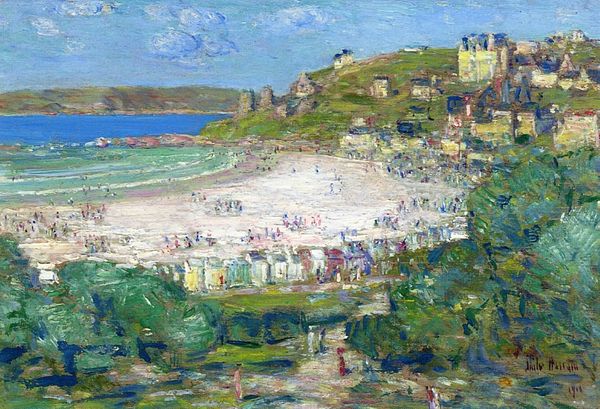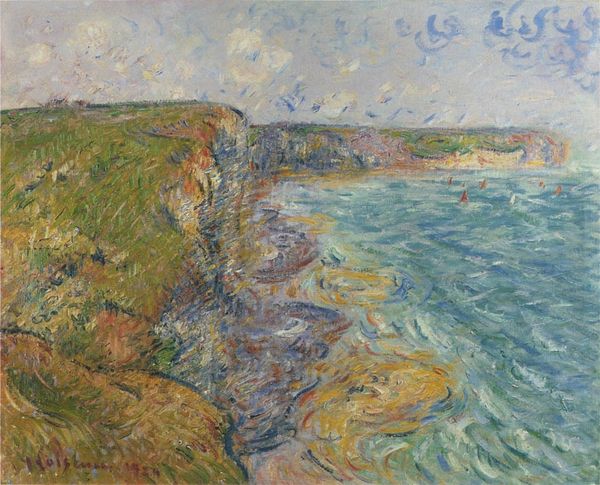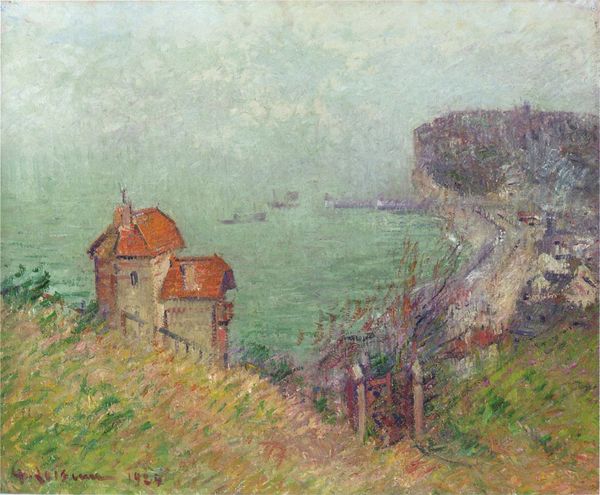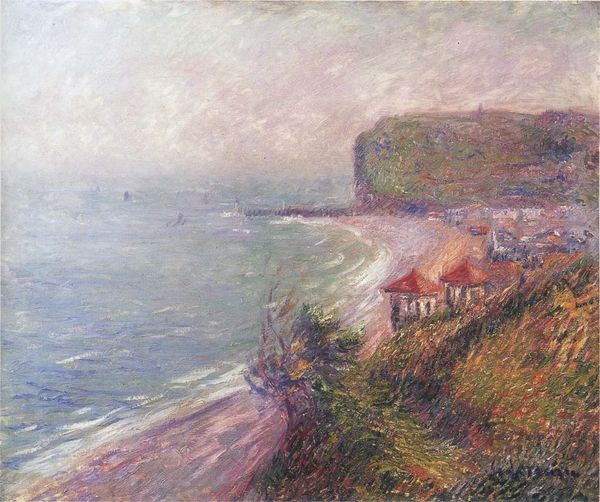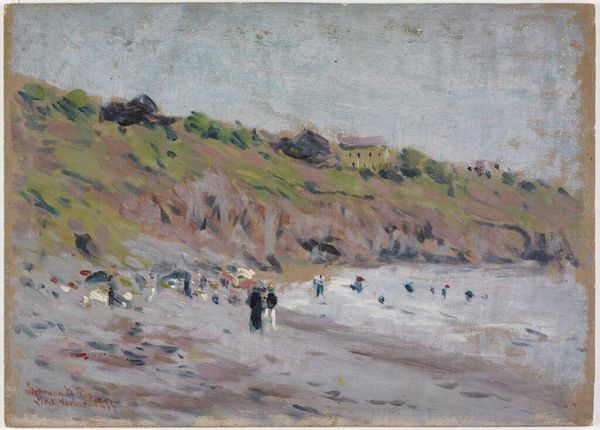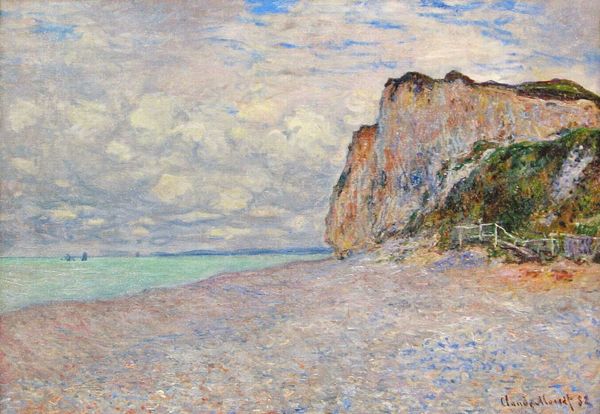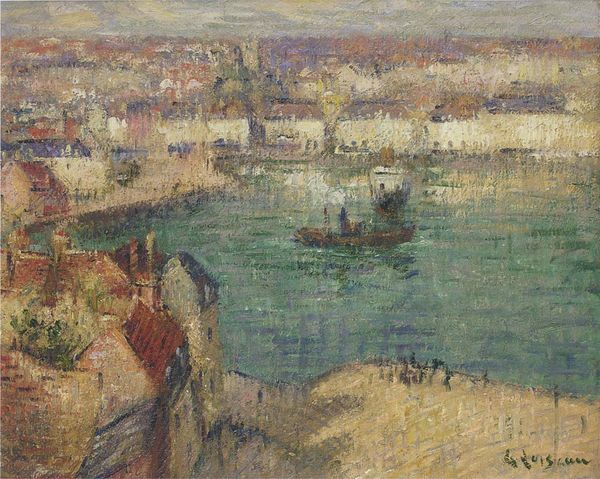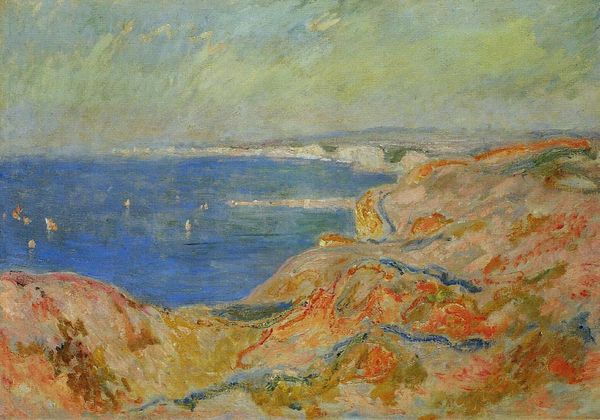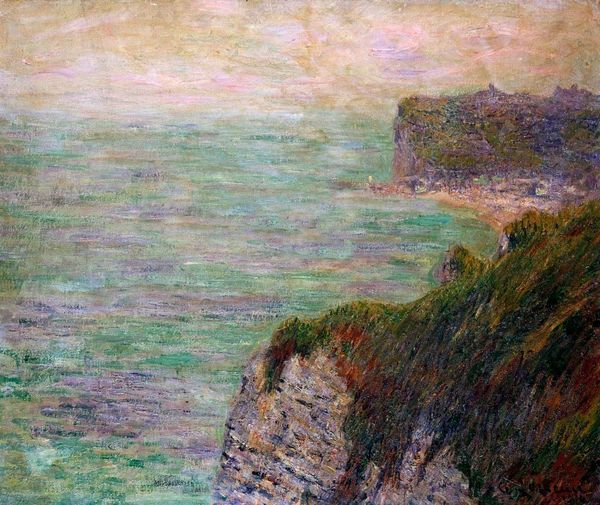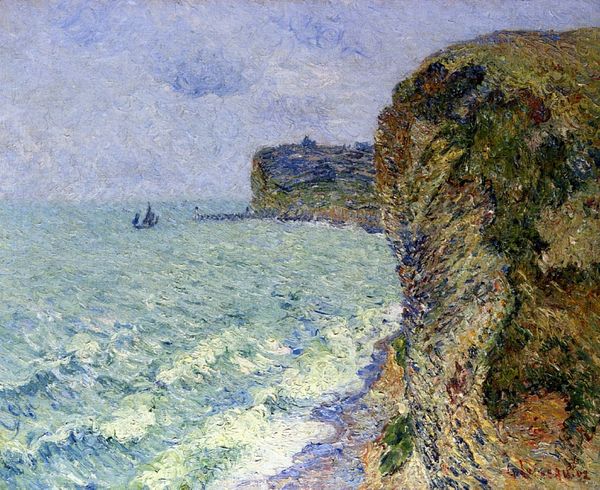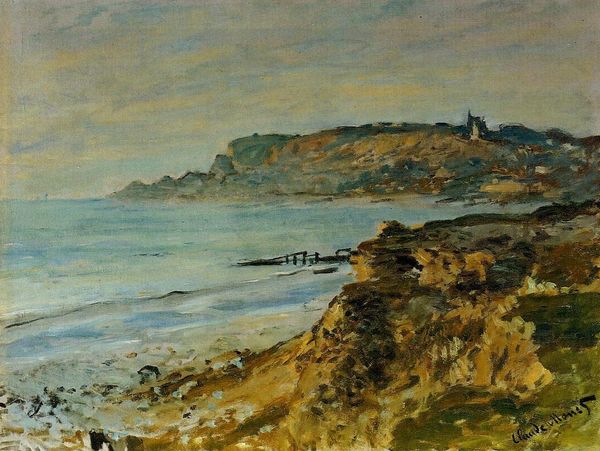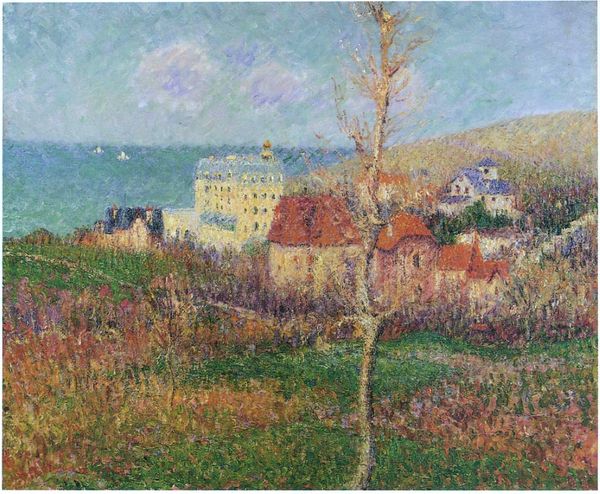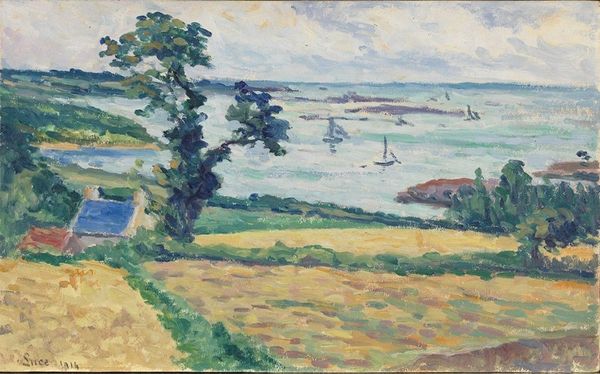
Copyright: Public domain
Editor: Gustave Loiseau's "Beach at Fecamp," painted in 1920 with oils, captures a subdued, overcast day. I’m really drawn to how the soft colors evoke a quiet melancholy. What do you see in this piece? Curator: There’s a particular resonance, isn’t there, between the beach, the sky, and the built environment—almost a convergence. Water has forever been symbolically linked with memory. Do you feel this connection here? Editor: I hadn’t really thought about it that way… The buildings and the cliff faces almost seem to melt together, and then into the sea. I guess I do see how the beach becomes like a border. Curator: Yes, and in coastal areas, such as Fecamp, which experienced profound shifts because of burgeoning resort industry and wartime disruption, that liminality carries extra weight. Loiseau's choice of colors - muted, blended, seemingly washed out - this all participates to construct a narrative. Do you observe particular symbols or forms that return in his other landscapes? Editor: Now that you mention it, I'm noticing the recurrence of that horizon line, heavy and prominent. It suggests maybe a link to memory of place across time for the artist. Curator: Exactly! What starts as personal remembrance is shared with everyone looking. It's a powerful shared understanding triggered by common symbology, of place, belonging and identity. What do you take away from that today? Editor: It is like how place-based visual memory creates almost like a portal for us to explore history from our present. It makes you realize that shared collective memory can be passed on, which is very potent! Curator: Precisely. That's where art truly comes alive, in how symbols transform and adapt.
Comments
No comments
Be the first to comment and join the conversation on the ultimate creative platform.

